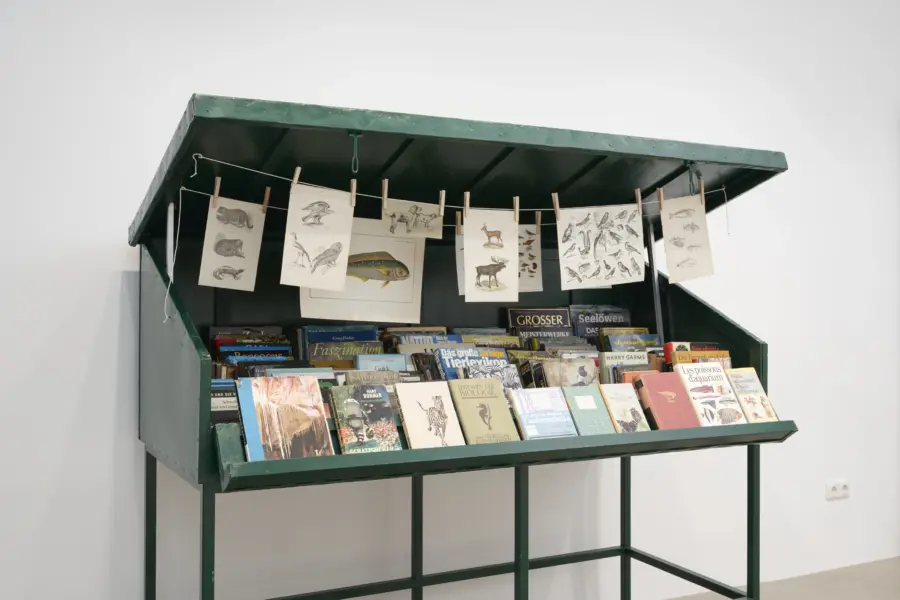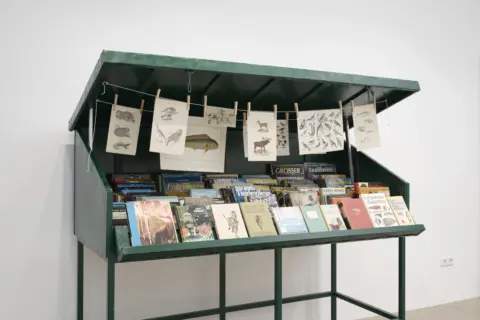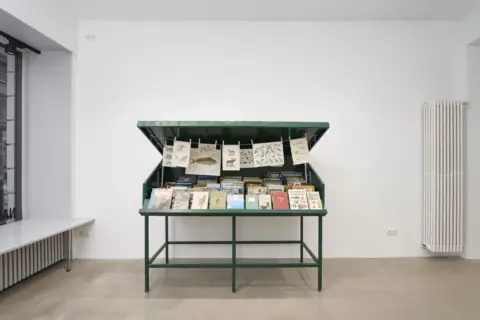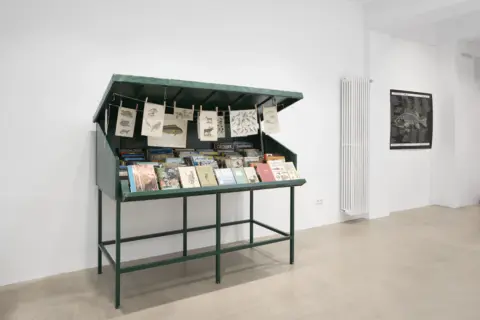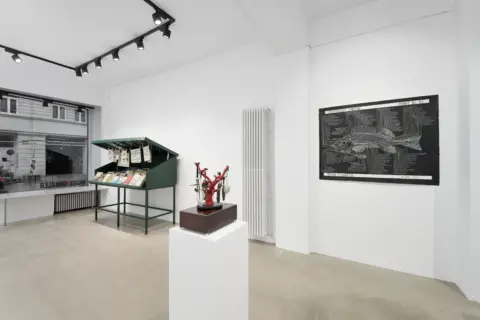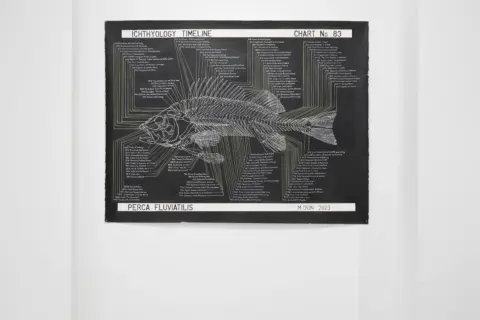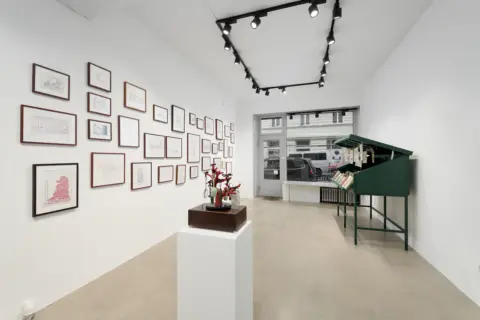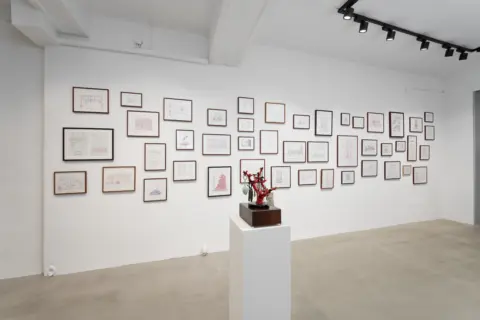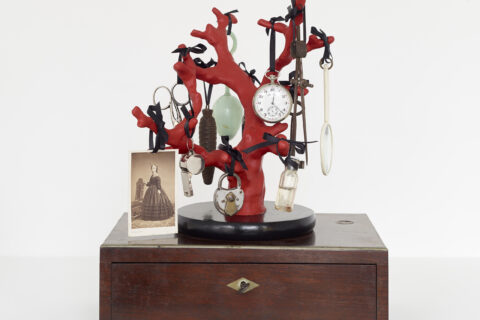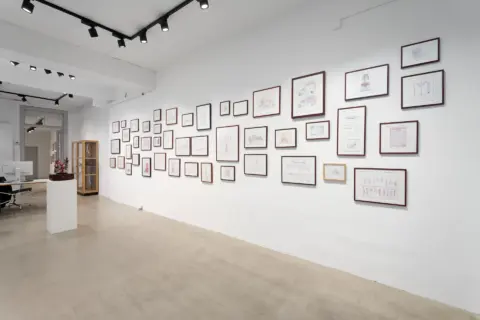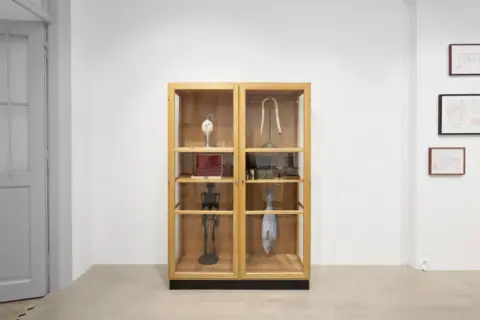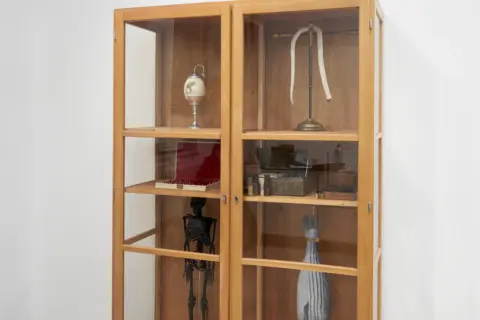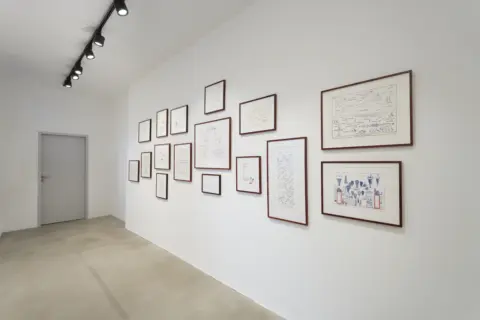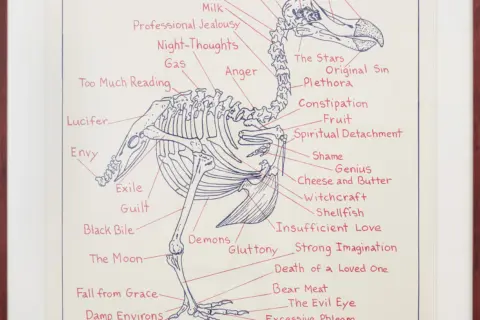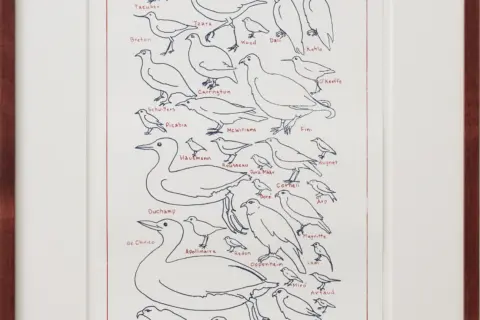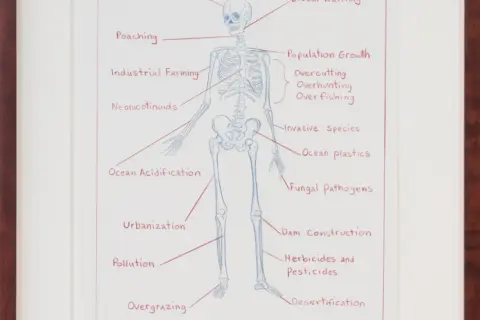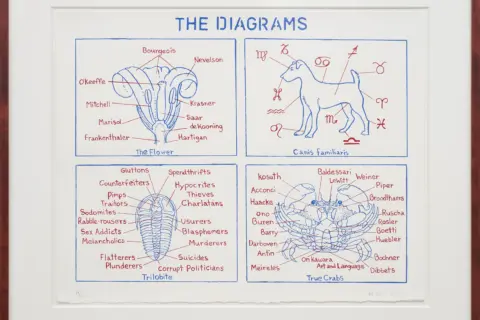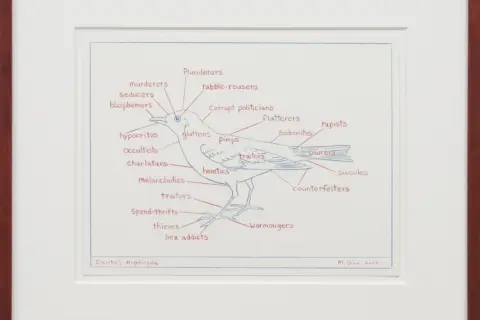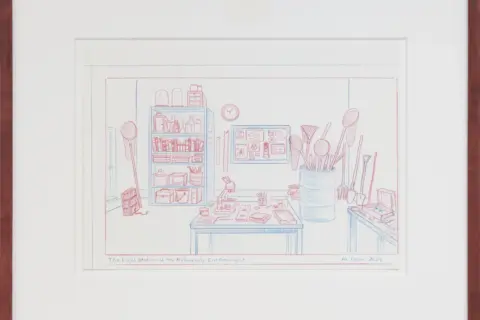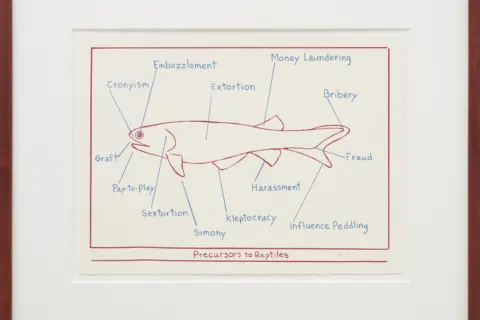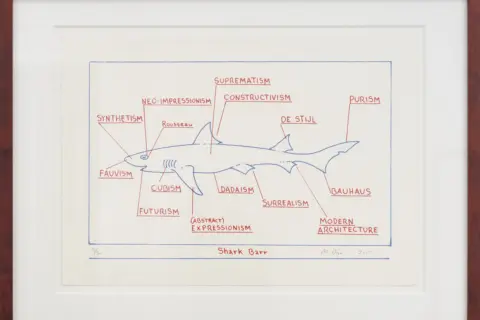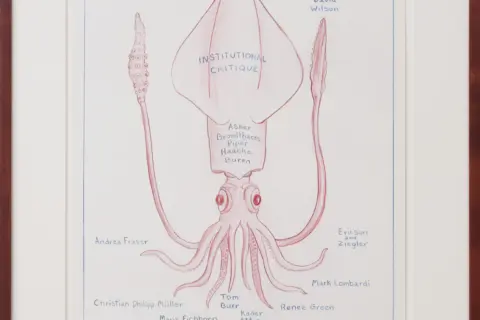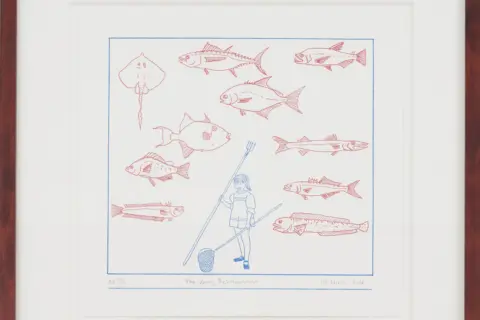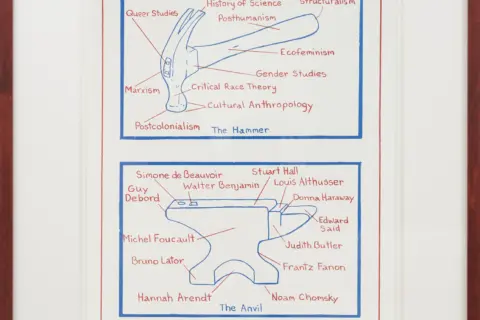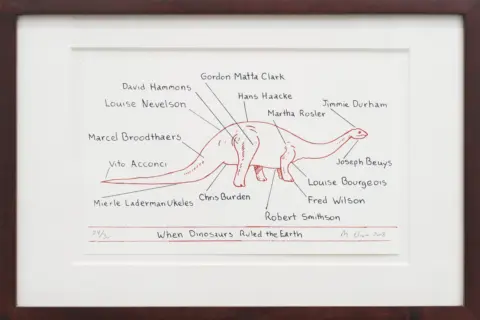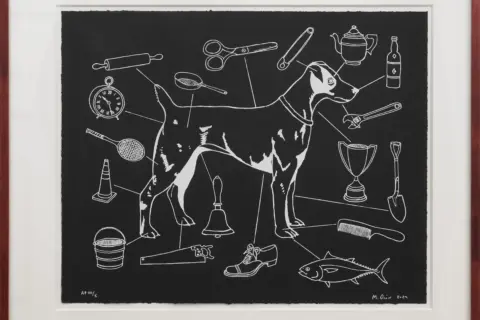Mark Dion Anatomy of Melancholy
02/02/2024 – 20/04/2024
Galerie Nagel Draxler
Türkenstraße 43
80799 München
Eröffnung: Donnerstag, 1. Februar 2024, 18-21 Uhr
Opening: Thursday, February 1, 2024, 6-9pm
Kontakt:
Peter Martin: +49 (0)172 8639 182
Press Release
** Please scroll down for the German version. **
“9. Artists must resist nostalgia. We never do ‘golden age’ history. When we reference the past it is not to evoke ‘the good old days’. Our relation to the past is historical, not mythical.”[1]
The tradition of the bouquinistes has its origins in the 16th century, when merchants throughout Paris offered books from their vendor's tray. They mainly sold writings that were banned due to censorship, including religious or political pamphlets and scandalous magazines. The business flourished during the Revolution, as very little literary material was printed and the bouquinistes were able to offer books that had been looted and confiscated from the libraries of the nobility and clergy. In the 19th century, the bouquinistes acquired the status of tradesmen and their profession was regulated.
Today, more than 200 bouquinistes adorn the banks of the Seine in Paris with almost 900 stalls selling around 300,000 books. A characteristic feature of the “boites” is the green, which is also the color of the Wallace fountain and the advertising pillars in Paris.
Mark Dion’s “Bookstall” (2015) is not a heavyweight monument to this Parisian tradition, which has become an integral part of the cityscape, cast in supposed eternity; rather, the attention to detail in his work confronts us with the disappearance of a tradition that once disseminated knowledge. Books are ordered or read digitally, the bouquinistes stay afloat by selling Eiffel Towers and fridge magnets, and today see themselves as a mere “folkloristic decoration”.
With the upcoming Olympic Games and the planned opening ceremony on the river, the work is also extremely topical. Over the years, the open-air dealers have repeatedly been a nuisance, either due to the distribution of obscene or revolutionary writings or because they competed with the established booksellers. This time, it is the police authorities who consider them a security threat. For several weeks, around two-thirds of the stalls are to be moved to another location, but the bouquinistes resist this, particularly due to the often very fragile condition of the crates. Dion fills his with long outdated scientific books on flora and fauna to make the disappearance of books and nature visible.
In addition to other sculptures and installations, “Anatomy of Melancholy” shows a collection of drawings and prints from various decades. Initially, the drawings, always in the bookkeeper colors blue and red, served as preliminary studies or project plans for his works. Over time, however, they have developed a dynamic of their own and today form a significant part of his artistic oeuvre. Some of the works are based on educational charts that humorously question the scientific-didactic system of categorization. In the eponymous print, Dion updates the philosophical, medical, and historical observations on the subject of melancholy.[2]
- Denise Kokko
_
[1] Mark Dion: Some Notes Towards a Manifesto for Artists Working With or About the Living World, in: The Incomplete Writings of Mark Dion. Selected Interviews, Fragments, and Miscellany, edited by Roel Arkesteijn, Fieldwork Museum, 2017, p. 285-289, p.286
[2] Vgl. Robert Burton: The Anatomy of Melancholy. What it is, with all the kinds, causes, symptomes, prognostices & several cures of it. In three Partitions with their several Sections, members, and subsections. Philosophically, Medicinally, Historically, opened and cut up, 1621.
__________________
“9. Artists must resist nostalgia. We never do ‘golden age’ history. When we reference the past it is not to evoke ‘the good old days’. Our relation to the past is historical, not mythical.”[1]
Die Tradition der Bouquinisten hat ihren Ursprung im 16. Jahrhundert, als Händler in ganz Paris Bücher aus ihren Bauchläden heraus anboten. Hauptsächlich wurden Schriften verkauft, die aufgrund der Zensur verboten waren, darunter religiöse oder politische Pamphlete und skandalträchtige Zeitschriften. Während der Revolution florierte das Geschäft, da nur wenig Literarisches gedruckt wurde und die Bouquinisten Bücher anbieten konnten, die aus Plünderungen und Beschlagnahmungen von Bibliotheken des Adels und des Klerus stammten. Im 19. Jahrhundert erlangten die Bouquinisten den Status von Gewerbetreibenden, und ihr Berufstand wurde reguliert.
Heute schmücken mehr als 200 Bouquinisten mit nahezu 900 Ständen, in denen sie rund 300.000 Bücher anbieten, das Seineufer in Paris. Charakteristisch für die „Boites“ ist das Grün, das auch die Farbe der Pariser Wallace-Brunnen und der Litfaßsäulen ist.
Mark Dions „Bookstall“ (2015) setzt dieser Pariser Tradition, die aus dem Stadtbild nicht mehr wegzudenken ist, kein schwergewichtiges, in vermeintlicher Ewigkeit gegossenes Denkmal, vielmehr konfrontiert uns die Detailgenauigkeit seines Werkes mit dem Verschwinden einer Tradition, die einst Wissen verbreitete. Bücher werden bestellt oder digitalisiert gelesen, die Bouquinisten halten sich mit dem Verkauf von Eiffeltürmchen und Kühlschrankmagneten über Wasser, sich selbst sehen sie nur noch als „folkloristisches Dekor“.
Mit den bevorstehenden Olympischen Spielen und der geplanten Eröffnungsfeier auf dem Fluss erhält das Werk zudem eine äußerst aktuelle Brisanz. Im Laufe der Zeit waren die Freilufthändler immer wieder ein Ärgernis, sei es aufgrund des Vertriebs unzüchtiger oder revolutionärer Schriften oder weil sie dem etablierten Buchhandel Konkurrenz machten. Diesmal sind es die Polizeibehörden, die hier eine Sicherheitsgefahr sehen. Für mehrere Wochen sollen etwa zwei Drittel der Stände an einen anderen Ort umziehen, doch die Bouquinisten wehren sich dagegen, insbesondere aufgrund des oft sehr zerbrechlichen Zustands der Kisten. Dion füllt seine mit längts überholten wissenschaftlichen Büchern über Flora und Fauna, um das Verschwinden von Büchern und Natur sichtbar werden zu lassen.
Neben weiteren Skulpturen und Installationen zeigt die Ausstellung „Anatomy of Melancholy“ eine Sammlung von Zeichnungen und Drucken aus verschiedenen Jahrzehnten. Anfangs dienten die stets in den Buchhalterfarben Blau und Rot gehaltenen Zeichnungen als Vorstudien oder Projektpläne für seine Werke. Im Laufe der Zeit haben sie jedoch eine eigenständige Dynamik entwickelt und bilden heute einen signifikanten Teil seiner Schaffensweise. Manche der Werke sind an Schautafeln angelehnt, die auf humorvolle Weise das wissenschaftlich belehrende System des Kategorisierens hinterfragen. Auf dem titelgebenden Print aktualisiert Mark Dion die philosophischen, medizinischen, historischen Betrachtungen zum Thema Melancholie.[2]
- Denise Kokko
_
[1] Mark Dion: Some Notes Towards a Manifesto for Artists Working With or About the Living World, in: The Incomplete Writings of Mark Dion. Selected Interviews, Fragments, and Miscellany, edited by Roel Arkesteijn, Fieldwork Museum, 2017, p. 285-289, p.286
[2] Vgl. Robert Burton: The Anatomy of Melancholy. What it is, with all the kinds, causes, symptomes, prognostices & several cures of it. In three Partitions with their several Sections, members, and subsections. Philosophically, Medicinally, Historically, opened and cut up, 1621.
